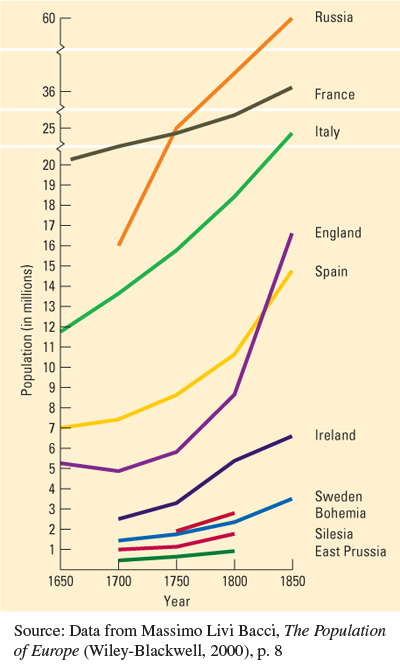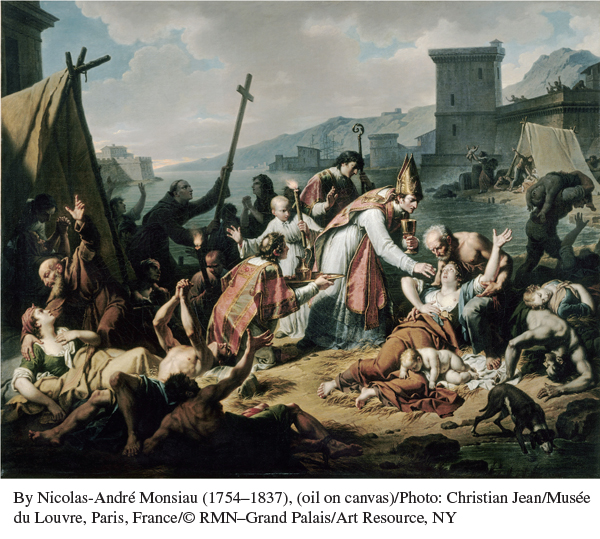A History of Western Society: Printed Page 549
A History of Western Society, Value Edition: Printed Page 529
A History of Western Society, Concise Edition: Printed Page 550
The New Pattern of the Eighteenth Century

In the eighteenth century the traditional demographic pattern of Europe was transformed. Growth took place unevenly, with Russia growing very quickly after 1700 and France much more slowly. Nonetheless, the explosion of population was a major phenomenon in all European countries. Europeans grew in numbers steadily from 1720 to 1789, with especially dramatic increases after about 1750 (Figure 17.2). Between 1700 and 1835 the population of Europe doubled in size.
What caused this population growth? In some areas, especially England, women had more babies than before because new opportunities for employment in rural industry (see “The Putting-Out System”) allowed them to marry at an earlier age. But the basic cause of European population increase as a whole was a decline in mortality — fewer deaths.
One of the primary reasons behind this decline was the still-

Advances in medical knowledge did not contribute much to reducing the death rate in the eighteenth century. The most important advance in preventive medicine in this period was inoculation against smallpox, a disease that killed approximately four hundred thousand people each year in Europe. Widely practiced in the Ottoman Empire, inoculation was popularized in England in the 1720s by the wife of the former English ambassador, but did not spread to the rest of the continent for decades. Improvements in the water supply and sewage, which were frequently promoted by strong absolutist monarchies, did contribute to somewhat better public health and helped reduce such diseases as typhoid and typhus in urban areas of western Europe. Improvements in water supply and the drainage of swamps also reduced Europe’s large insect population. Flies and mosquitoes played a major role in spreading diseases, especially those striking children and young adults. Thus early public health measures contributed to the decline in mortality that began with the disappearance of plague and continued into the early nineteenth century.
Human beings also became more successful in their efforts to safeguard the supply of food. The eighteenth century was a time of considerable canal and road building in western Europe. These advances in transportation, which were also among the more positive aspects of strong absolutist states, lessened the impact of local crop failure and famine. Emergency supplies could be brought in, and localized starvation became less frequent. Wars became less destructive than in the seventeenth century and spread fewer epidemics.
None of the population growth would have been possible if not for the advances in agricultural production in the seventeenth and eighteenth centuries, which increased the food supply and contributed nutritious new foods, particularly the potato from South America. In short, population grew in the eighteenth century primarily because years of higher-
Population growth intensified the imbalance between the number of people and the economic opportunities available to them. Deprived of land by the enclosure movement, the rural poor were forced to look for new ways to make a living.